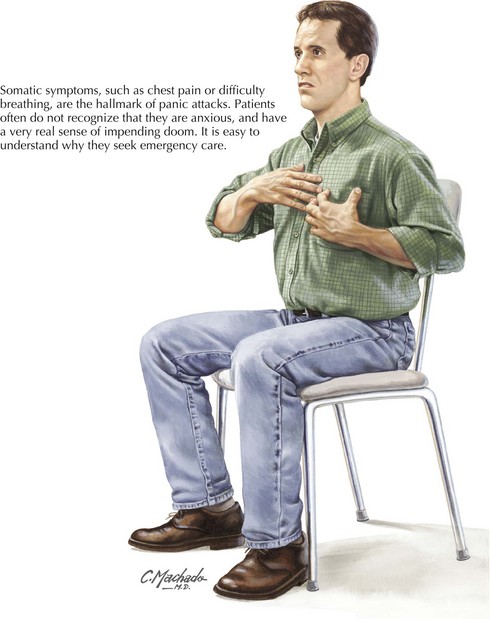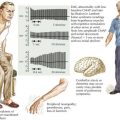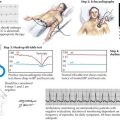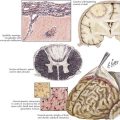24 Panic Disorder
Clinical Presentation
Patients with panic disorder are invariably focused on the details of their bodily sensations and tend to reach catastrophic conclusions based on minor aches, palpitations, and shortness of breath (Fig. 24-1). They may present repeatedly in the ED with dyspnea, chest pain, tachycardia, and faintness. Extremity numbness or paresthesia suggest that patients are vasoconstricted from hyperventilation-induced respiratory alkalosis. Typically, patients are not reassured by a negative examination and may present again a few days later with the same complaints. Between episodes they may feel entirely well, but more commonly remain anxious and vigilant for signs of the next attack.
Treatment
Many patients also require pharmacologic management. Benzodiazepines abort panic attacks quickly and can be used as needed if attacks are infrequent. Most antidepressant medications (possibly excepting bupropion) have antipanic efficacy; they are the first choice for extended treatment. Anxious patients are sensitive to the initial activating or anxiogenic effects of antidepressants and need to begin with lower than usual doses. MAO inhibitors may work when other antidepressants are ineffective. However caution is needed with MAO inhibitors because of their potential for serious side effects (see Chapter 29).
Barlow D. Anxiety and Its Disorders: The Nature and Treatment of Anxiety and Panic. New York, NY: Guilford; 2002.
Breslau N, Klein DF. Smoking and panic attacks: an epidemiologic investigation. Arch Gen Psychiatry. 1999 Dec;56(12):1141-1147.
Marks I. Living With Fear: Understanding and Coping with Anxiety. New York, NY: McGraw-Hill; 2005.
Preter M, Klein DF. Panic, suffocation false alarms, separation anxiety and endogenous opioids. Prog Neuropsychopharmacol Biol Psychiatry. 2008 Apr 1;32(3):603-612.
Sareen J, et al. Anxiety disorders and risk for suicidal ideation and suicide attempts: a population-based longitudinal study of adults. Arch Gen Psychiatry. 2005 Nov;62(11):1249-1257.








